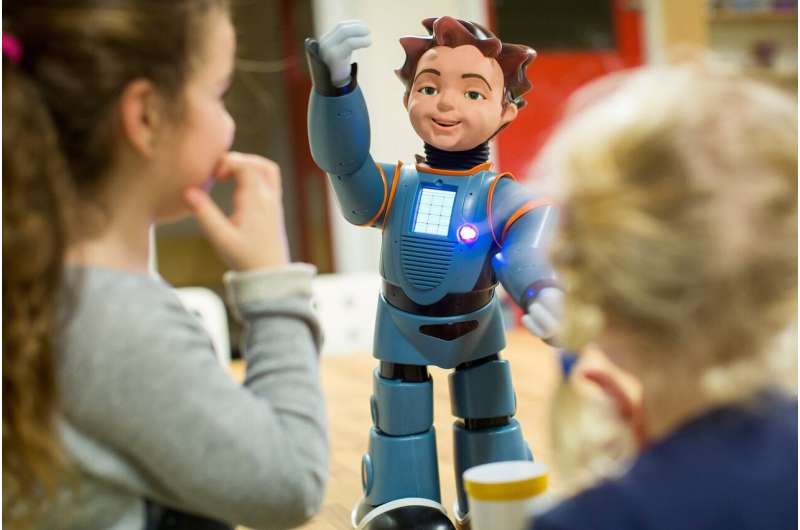Primary school children benefit from learning with a social robot

Research has shown that explaining aloud what you are learning, whether to yourself or to someone else, leads to a better understanding of the subject. But in situations where you are working independently, it is not particularly intuitive to start explaining things. Researchers at the University of Twente have discovered that primary school children can better explain what they are studying when they learn alongside a robot. Frances Wijnen, one of the ELAN researchers involved: "The results led us to conclude that social robots have the potential to support children's learning in a new and positive way."
Social behavior
Wijnen explains that a social robot is able to help a child to explain aloud what they are learning, even when no-one else is around. "In our study, we used the ZENO robot, which can show all sorts of facial expressions, wave, see and talk. ZENO's social behaviors mean that it can trigger social reactions in people."
The results of the study showed that when they had the robot for company, children spent more time explaining, mentioned more relevant information, and made more links between relevant pieces of information. "This is interesting," says Frances, "because in both situations—one with the ZENO robot, and one with a tablet—the task and the interactions were the same." In both settings, the children were able to give verbal explanations, and the robot and the tablet reacted in the same way; but the children who worked alongside the robot gave more detailed and complete explanations, indicating that they had understood the subject better.
More research is required to determine which aspects of the robot motivated the children to give better explanations. In any event, the results indicate that social robots have the potential to support children's learning in a new and positive way.
Research study design
To determine whether a social robot was better able to motivate children to explain what they were learning, two situations were compared. In the "control situation," the children worked with a computer system controlled by a tablet. In the "experimental situation," the children worked with the same computer system, supplemented by the ZENO robot. The participating children were given a learning task which required them to understand the operation of equilibrium, using a balance beam. The children could place pots of various weights on this balance beam, at various distances from the midpoint of the beam. Depending on the group they were in, the children were then asked to explain their findings either to the tablet or to the ZENO robot.
This study was carried out by researchers from the ELAN (teacher training) institute and the HMI (Human Media Interaction) group at the University of Twente. An article presenting the design and results of the study is published in the journal Transactions on Human-Robot Interaction.
More information: Frances M. Wijnen et al. Now We're Talking, ACM Transactions on Human-Robot Interaction (2019). DOI: 10.1145/3345508
Provided by University of Twente





















